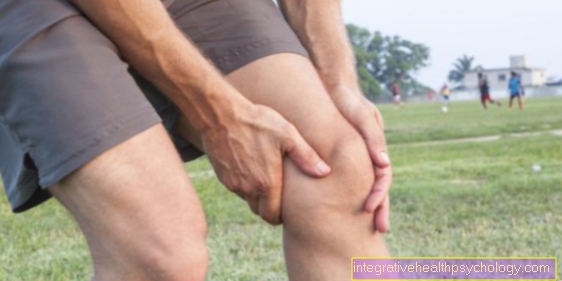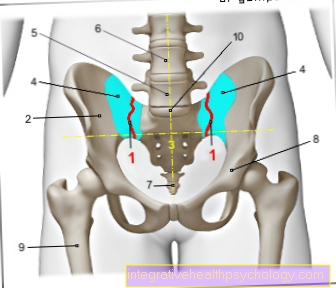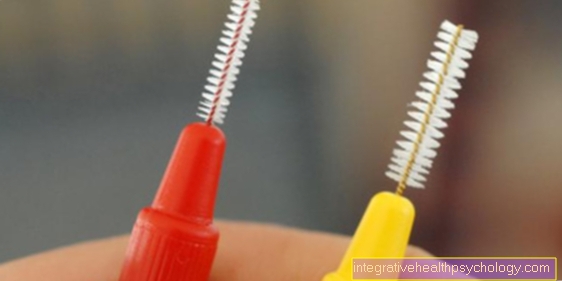Inlay for hallux rigidus
introduction
In patients with hallux rigidus, an attempt is first made to treat it conservatively, i.e. without surgery. In addition, insoles and special footwear are primarily used, which alleviate the pain of the person affected and restore the best possible mobility of the foot and thus a normal gait pattern. In addition, the hallux rigidus insole relieves the degeneratively changed metatarsophalangeal joint of the big toe and the progression of the disease can be slowed down under certain circumstances.

Insoles in hallux rigidus
The stiffening of the joint caused by the Hallux rigidus is particularly noticeable when the foot rolls, which is why it should be supported particularly during this movement by keeping the joint somewhat still. In principle, there are options to change the shoe sole itself by inserting the roll-off aid into the shoe sole between the outsole and the shoe, or to have an insert made, which has the advantage that it can be worn in different shoes.
The so-called ball roll is most often used as an insert. This is attached to the front of the shoe. It relieves the bale mainly by reducing the unwinding area and shortening the unwinding time.
The ball roll is usually combined with a stiffening of the shoe sole itself. In addition, there is the toe roll, which can be an advantage in the case of muscle weaknesses, as it increases stability. The disadvantage, however, is that considerably more force has to be used to walk, as it makes the wearer feel as if they are constantly running uphill.
The last thing with hallux rigidus is the metatarsal roll, which is good for relieving almost all ankles, not just the metatarsophalangeal joint of the big toe. However, this is paid for by the fact that the knee becomes more unstable, making standing and walking more difficult.
An alternative is the spring insert (often also referred to as the Hallux rigidus spring), which is also often prescribed for Hallux rigidus because it relieves the joint, facilitates the rolling process and is also comfortable because, unlike rigid insoles, it has the ability has to adapt well to the individual foot shape and different movements.
If for any reason the person concerned refuses to wear a Hallux Rigidus insert, he or she can still wear shoes with very stiff soles, such as wooden clogs. Even these can lead to a significant improvement in pain in some.
Treatment of Hallux rigidus with a Rigidus spring
Insoles that are prescribed and used as part of a supplementary, conservative therapy for Hallux rigidus are characterized by what is known as a rigid spring.
These are metallic springs or insole components that are attached to the underside of the insoles with the insole core, namely where the first beam of the foot comes to rest later.
The use of the rigidus spring under the metatarsophalangeal and middle joint is often combined with a lowering of the distal phalanx of the great toe, which leads to a redistribution of forces during the load on the foot.
The stiffened metatarsophalangeal joint of the big toe is relieved, relieving postures are corrected, pain can be reduced and inflammatory processes can be healed.
Read more about the topic here: The Hallux rigidus spring
Insert with stiffening of the 1st ray
For supporting, conservative treatment hallux rigidus can Manufacture of orthopedic insoles be of service through an orthopedic shoemaker.
The so-called hallux rigidus-specific insole is a characteristic Stiffening spring, which is installed in the area of the insert on which the 1st ray of the foot than the area of the affected big toe.
Stiffening springs of different lengths can be used here, which are usually attached to the underside of the insert and at the same time with a Lowering the area of the phalanx of the big toe is combined.
The effect is based on a better and gentler distribution of the forces that arise when the foot is loaded, so that it becomes a Pain relief, one Healing of an accompanying inflammation and comes to avoid a relieving posture.
How much do insoles cost for Hallux rigidus?
What exactly the orthopedic insoles for the supportive treatment of hallux rigidus cost cannot be said in general terms, as the prices vary between the respective manufacturers and it also depends on what materials are used and whether they are everyday or sports insoles. On average, however, you should expect around 100-150 €.
In the case of patients with statutory health insurance, most of the costs for the therapeutically indicated insoles are covered, but an additional payment prescribed by the respective health insurance company is usually to be made.
Privately insured patients, on the other hand, have to pay the full price for the insoles on site to the respective orthopedic shoemaker and, depending on the respective health insurance company, receive a partial or full reimbursement of the costs after submitting the prescription.





























